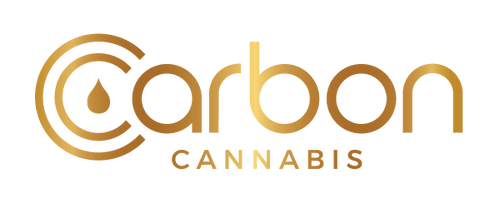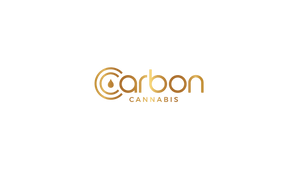Alright, let’s cut through the noise. We’ve all heard people throw around crazy-high THC numbers like they’re some sort of trophy. But does seeing a 27% THC label actually promise you a legendary high? Or is it all just hype? I decided to peel back the layers on THC dosing, cannabis labeling, and edible potency-and wow, there’s a lot more nuance than most of us realize. So grab a seat in the chill zone, and let’s figure out what those THC percentages really mean and how to find your sweet spot without the confusion.
What Exactly Are THC Percentages?
First things first, THC percentages show you how much tetrahydrocannabinol-the compound that delivers that signature cannabis buzz-is in your product. If you peek at Health Canada’s official guide, you’ll see THC amounts represented either by weight (mg per gram) or by dose. For example, a flower labeled at 20% THC means roughly 200 mg of THC in each gram. Edibles typically list total milligrams per serving or for the entire package. The bottom line? That flashy "high" percentage doesn’t necessarily translate to a high for everyone.
The Dosage Puzzle: It’s What Goes In Your Body That Counts
Let’s be real: most people get hung up on percentages but forget the real deal is how much THC you’re actually consuming in milligrams. This is super crucial if you’re new to edibles. The folks at Leafly put out a great guide on edible dosing, suggesting newbies start with about 2.5-5 mg of THC. Ottawa Public Health echoes this with their advice to start light—think one or two puffs of a 10% flower, or as little as 2.5 mg THC in edibles (source). If you’re used to lighter stuff, jumping straight to a 25% flower could catch you way off guard. My advice? Start low and take it slow your first few rides trust me, your next self will give you a grateful nod.
Why Those THC Labels Sometimes Don’t Add Up
Now, here’s where the plot thickens. A 2015 JAMA study checked out edibles from three U.S. cities and guess what? Only 17% had THC labels that were accurate. Around 60% were over-labeled, meaning you actually get less THC than the packaging claims. About 23% were under-labeled, which could lead to an accidental knock-out. The takeaway? Don’t buy into every label blindly-especially with edibles. If it’s your first time trying a product, nibble a small piece and wait it out before going for more.
Edible Strength: How Much Is Too Much?
Edibles can be a whole different animal because your body’s gut processes things differently and there’s always a chance the label is off. Most regulated places cap edibles at 10 mg THC per serving or package, but wild west rules can vary (learn more). Medical edibles? They tend to pack a heavier punch. Here’s a golden nugget: slice your edible into smaller doses if possible, and remember the mantra-go slow. The classic newbie move is to eat more because “nothing’s happening yet.” Trust me, patience is your friend.
- Beginner: 2.5–5 mg per dose
- Occasional user: 5–10 mg
- Seasoned pro: 10–20 mg (only if you really know what you’re messing with!)
Keep in mind, edibles can take up to two hours to kick in. Set a timer if you have to. We’ve all been there, trust me.
Hemp vs. Cannabis: The Sneaky Labeling Twist
Here’s a curveball you might not expect: some products are labeled as "hemp-derived Delta-9 THC." In the U.S., hemp is legally defined as having 0.3% THC or less by dry weight-as explained in this recent research article. But don’t let that fool you-some manufacturers use this legal loophole to sneak legitimate doses of THC into hemp products under the radar. Since regulations can be lax, it’s a bit of a wild west for strength and safety. If you’re eyeing something labeled hemp-derived, be extra cautious about dosing and know your source.
Why Your Friend’s Dose Might Be All Wrong For You
Here’s where things get personal. Every person’s body is its own little universe. Your tolerance, weight, metabolism, and even what you scarfed for lunch can shift how THC hits you. According to SunMed Growers, a joint with 20% THC could have one friend giggling uncontrollably and another barely feel a thing. So don’t stress if your buddy says 30 mg is nothing-they’re not you. Experiment with care, make small dosage tweaks, and above all, keep your sesh chill.
The Best Cannabis Experience Isn’t Just About Percentages
Here’s a little secret: zeroing in on THC numbers alone misses a whole lot of what makes cannabis magic. Ever heard of the entourage effect? That’s when cannabinoids team up to create a unique vibe. Then you have terpenes-those flavorful compounds that also shape your feel-and CBD which can mellow a strong high. Plus, your own endocannabinoid system (the fancy stuff about how your body responds) plays a huge role. Sometimes, a 12% flower rich in myrcene can feel way smoother and sweeter than a 25% "blaster" stress bomb. Don’t let the fear of missing out push you into chasing the highest number on the shelf!
- Go for products with a balanced THC:CBD ratio if you want something chill and functional
- Check out terpene profiles to match vibes-citrus for energy, earthy for relaxation
- Start low with THC and work your way up to find your perfect feel
How Regulations Shape What You See on Labels
Finally, where you’re buying and the local laws matter a ton. Places like Canada have strict testing and labeling requirements. Elsewhere? Not so much. This means a "20% THC" bud from one dispensary could feel totally different than one listed the same at another spot. Until labels get more standardized, your safest bet is to start low, keep track of what works, and trust your own experience.
Frequently Asked Questions
-
Can I trust THC labels on edibles?
Sadly, not always. Studies show many edible labels are off, sometimes a bit, sometimes a lot. Best to start slow and test new brands cautiously. -
Is a 30% THC flower always stronger than 20%?
Nope! Your body chemistry, the cannabinoid mix, terpenes, and even your mood influence the high way more than just a number. -
What’s a safe edible dose for beginners?
Stick to 2.5–5 mg THC per serving until you get a feel for it. Skipping this step can lead to classic newbie mistakes. -
How do hemp THC labels compare to cannabis?
Hemp products should have no more than 0.3% THC by dry weight. Some do sneak in bigger doses, but quality control can be inconsistent. -
Want a gentle high?
Choose low-THC, high-CBD strains or edibles for a pleasant, mellow vibe without the overpowering buzz.
Wrapping It Up
Here’s the bottom line: THC percentages are just one piece of your cannabis puzzle. They’re a starting point, not a rulebook. How you dose, where you buy from, and your own unique self all shape your experience. Next time someone starts boasting about "off-the-charts" THC numbers, you’ll know there’s way more to the story. Keep it fun, keep it safe, and swing by gocarbon.co to share your funniest edible tales or your secret tips! Stay lifted, my friends.



